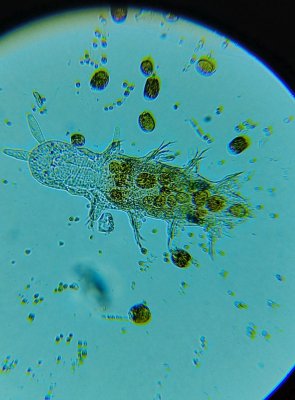I'm in the middle of a battle with what I assume to be amphidinium dinoflagellates. I'm dosing nitrates, phosphates, and silica in order to increase populations of diatoms, cyano, and other algae. After several weeks, I'm starting to see bigger populations of each of those which in turn is providing habitat for other critters. I check several samples each week just to see what is going on microscopically. I came across this guy with what appears to be a body full of amphidinium. Any ideas of what it is? I assume it's a larval stage of some pod. I just need to keep increasing my population of them.




















